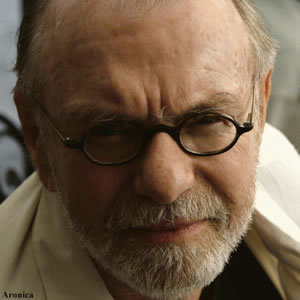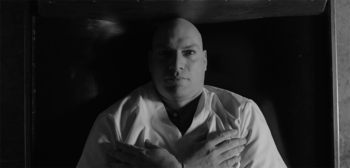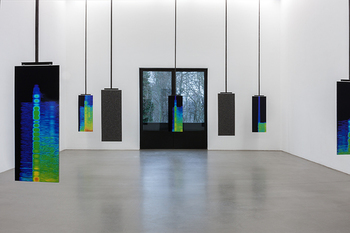W. J. T. Mitchell

W. J. T. Mitchell is Gaylord Donnelley Distinguished Service Professor of English and Art History at the University of Chicago. He served as Chair of the English Department from 1988 to 1991, and has been the editor of Critical Inquiry since 1978. He received his B.A. from Michigan State University in 1963, his M.A. and Ph.D. from Johns Hopkins University in 1968. He taught in the English Department of Ohio State University from 1968-77 before moving to Chicago.
Professor Mitchell has received fellowships from the Guggenheim Foundation, the National Endowment for the Humanities, and the American Philosophical Society, as well as research conference grants from the Rockefeller Foundation and the Exxon Educational Foundation. In the winter of 1993 he was awarded a research residency as the Fairchild Distinguished Scholar at the California Institute of Technology. During his editorship, Critical Inquiry has thrice been recognized for the “Outstanding Special Issue of a Scholarly Journal” (1981, 1988, 1998) and for outstanding design (for its special issue, Art and the Public Sphere) by the Conference of Editors of Learned Journals. Critical Inquiry also won the American Publisher’s Association award for an outstanding special issue in 1998. Professor Mitchell chaired the planning committee for the Chicago Humanities Institute in 1991 (now the Franke Institute), and has served on the governing boards of the Smart Gallery of Art, the Highgate Art Trust, the Benton Fellowship Program, the Franke Institute, and the University of Chicago Press, where he has served as Chairman of Board. In 1996, his book Picture Theory was awarded the College Art Association’s Charles Rufus Morey Prize for “an especially distinguished book in the history of art.” In 1997, Picture Theory received the Gordon E. Laing Prize for the book by a faculty author that has brought the most distinction to the University of Chicago Press. His most recent work, The Last Dinosaur Book: The Life and Times of a Cultural Icon (1998) was selected as one of the top 100 books of 1999 by the Toronto Globe & Mail. It was also nominated for the National Book Award and the Pulitzer Prize, and won the Award of Excellence and the Juror’s Choice for design at the 1998/99 Chicago Book Clinic Show.
Professor Mitchell’s articles have appeared in numerous journals, including; Art in America, October, Art Bulletin, London Review of Books, Boston Review, Times Literary Supplement, Artforum, Cahiers de l’art moderne, Krisis, Representations, Raritan Review, AfterImage, Salmagundi, Works & Days, New Literary History, ELH, South Atlantic Quarterly, Studies in Romanticism, Eighteenth Century Studies, Trafic, Interfaces, Transition, and The Chronicle of Higher Education. Translations of his writings have appeared in French, German, Dutch, Danish, Hebrew, Swedish, Chinese, and Japanese. His work is primarily focused on the interplay of vision and language in art, literature, and media, and the subjects of his articles range from general problems in the theory of representation, to specific issues in cultural politics and political culture. His books include Blake’s Composite Art (Princeton, 1977), Iconology (Chicago, 1986), Picture Theory(Chicago, 1994), The Last Dinosaur Book (Chicago, 1998), and What Do Pictures Want?(Chicago, 2005). He has edited six collections of essays, all published by University of Chicago Press: The Language of Images (1980), On Narrative (1981), The Politics of Interpretation (1983), Against Theory (1985), Art and the Public Sphere (1993), and Landscape and Power (1994, 2nd edition, enlarged with 5 new essay, 2004). During his editorship, Critical Inquiry has published issues on canon-formation, gender, race and writing, public art, politics and poetic value, metaphor, psychoanalysis, identity politics, pluralism, new directions in art history, questions of evidence, intimacy, comics and media, and many other special topics.
Professor Mitchell has twice served as a Professor at the School of Criticism and Theory (Northwestern, 1983; Dartmouth, 1990), and he has lectured at universities and art museums throughout the United States, as well as in Europe and the Far East. Recent special teaching assignments include a Mellon Faculty Seminar at Tulane University, a seminar on Romanticism at Beijing Foreign Studies University in China, an NEH Summer Seminar for College Teachers at the University of Chicago, a post as Canterbury Visiting Fellow at Canterbury University, New Zealand, a visiting professorship at the Institute for Art History, Aarhus, Denmark, and two visiting professorships at the Institute for Fine Arts and English Department at New York University in 1998 and 2000. The South African Council for Scientific Development sponsored his lectures in Capetown, Durban, and Johannesburg in the summer of 1997, and Duke University invited him to give the Benenson Lectures in Art History in the spring of 2000. In the spring of 2002 he was awarded the Berlin Prize Fellowship to the American Academy in Berlin, and in the fall of 2002 he delivered the Alfonso Reyes Lectures in Mexico City. Other recent lectures include the W. E. B. Du Bois lectures at Harvard, and the Patten Lectures at Indiana University. He was a research fellow at the Clark Institute for Art History in the fall of 2008, and received the MLA’s 2006 James Russell Lowell Prize in Language and Literature for What Do Pictures Want? In 2014 he received the College Art Association’s Lifetime Achievement Award for the teaching of art history. His recent publications include two books: Cloning Terror: The War of Images, September 11 to Abu Ghraib (2011), and Critical Terms in Media Studies (2010; with Mark Hansen). His book, Seeing Through Race, based on the W. E. B. DuBois Lectures at Harvard, was published by Harvard University Press in 2012, and his collaborative book, Occupy: Three Essays in Disobedience, co-authored with Michael Taussig and Bernard Harcourt, published by Chicago in the spring of 2013. His newest book is Image Science: Iconology, Media Aesthetics, and Visual Culture, forthcoming in 2015. He is currently working on a book entitled Seeing Madness: Insanity, Media, and Visual Culture.
Events
SIDEBAR welcomes internationally renowned artist Lawrence Abu Hamdan, curator Omar Kholeif and scholar W.J.T Mitchell (University of Chicago, Department of English) to the Gray Center Lab for a lecture and conversation exploring Abu Hamdan's work on the politics of listening and visuality. The discussion will center on Abu Hamdan's work as a "private ear," and his projects that deal with the intersection of politics and legality in the Middle East and abroad.
Join us for a screening of artist Javier Téllez' recent film, NOSFERATU (The Undead), followed by a conversation with UChicago's W.J.T. Mitchell (Department of English and Art History). Téllez’ film was inspired by Nosferatu, eine Symphonie des Grauens, the expressionist silent masterpiece directed by F. W. Murnau in 1922. Téllez made the work in collaboration with people living with mental illness after a series of workshops that he conducted on the subjects of vampirism and the representation of psychiatric institutions in film.
Join us for a special evening of performances in the Logan Center Penthouse conceived by Gray Center Fellows Lawrence Abu Hamdan, Hannah B Higgins, and W.J.T. Mitchell; joined by special guests Nancy Rose Hunt, Sasha Crawford-Holland, Siting Jiang, and Caleigh Stephens. The event employs a special scenography designed to invoke strategies for seeing words and hearing images. The performance will examine and challenge our evolving notions around the politics of listening and the voice, enacting live what the trio of Abu Hamdan, Higgins, and Mitchell term the Sonic Image.





